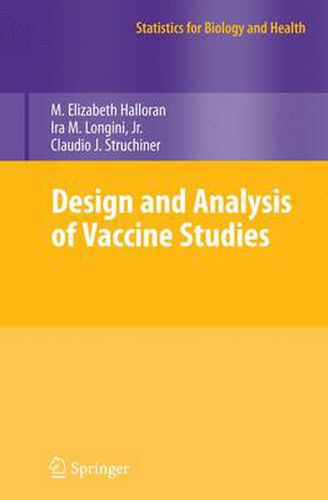Readings Newsletter
Become a Readings Member to make your shopping experience even easier.
Sign in or sign up for free!
You’re not far away from qualifying for FREE standard shipping within Australia
You’ve qualified for FREE standard shipping within Australia
The cart is loading…






This title is printed to order. This book may have been self-published. If so, we cannot guarantee the quality of the content. In the main most books will have gone through the editing process however some may not. We therefore suggest that you be aware of this before ordering this book. If in doubt check either the author or publisher’s details as we are unable to accept any returns unless they are faulty. Please contact us if you have any questions.
Immunizationisoneofthegreatadvancesinpublichealth. Figure0. 1showsacamel with a solar-powered refrigerator on his back carrying vaccines across a hot desert to the far reaches of civilization. Many vaccines contain live viruses that need to be kept cold, or the vaccine viruses will die, and the vaccines will lose their ability to produce an immune response. Thus a continuous chain of refrigeration, the cold chain, from the origin to delivery of some vaccines needs to be maintained. The inspiration of the camel image is that it represents the dedication of the world to bring vaccines to everyone. The ?rst major success, and the origin of the word vaccination (vacca for cow), was Jenner’s introducing cowpox-based vaccine against smallpox in the late 18th century. After nearly a century hiatus, at the end of the 19th century, inoculations against cholera, typhoid, plague (caused by bacteria) and rabies (caused by a virus) were developed. By the early 20th century, statisticians of the stature of Karl Pe- son, Major Greenwood, and Udny Yule were heartily involved in discussions of evaluating these vaccines in the ?eld. In the 1920s, new vaccines included pert- sis, diptheria, tetanus, and bacille Calmette-Guerin ‘ against tuberculosis. The 1930s saw development of yellow fever, in?uenza, and rickettsia vaccines. After World War II, the advent of cell cultures in which viruses could grow enabled production of polio vaccine and vaccines against measles, mumps, rubella, varicella, and a- novirus, among others (Plotkin et al 2008).
$9.00 standard shipping within Australia
FREE standard shipping within Australia for orders over $100.00
Express & International shipping calculated at checkout
This title is printed to order. This book may have been self-published. If so, we cannot guarantee the quality of the content. In the main most books will have gone through the editing process however some may not. We therefore suggest that you be aware of this before ordering this book. If in doubt check either the author or publisher’s details as we are unable to accept any returns unless they are faulty. Please contact us if you have any questions.
Immunizationisoneofthegreatadvancesinpublichealth. Figure0. 1showsacamel with a solar-powered refrigerator on his back carrying vaccines across a hot desert to the far reaches of civilization. Many vaccines contain live viruses that need to be kept cold, or the vaccine viruses will die, and the vaccines will lose their ability to produce an immune response. Thus a continuous chain of refrigeration, the cold chain, from the origin to delivery of some vaccines needs to be maintained. The inspiration of the camel image is that it represents the dedication of the world to bring vaccines to everyone. The ?rst major success, and the origin of the word vaccination (vacca for cow), was Jenner’s introducing cowpox-based vaccine against smallpox in the late 18th century. After nearly a century hiatus, at the end of the 19th century, inoculations against cholera, typhoid, plague (caused by bacteria) and rabies (caused by a virus) were developed. By the early 20th century, statisticians of the stature of Karl Pe- son, Major Greenwood, and Udny Yule were heartily involved in discussions of evaluating these vaccines in the ?eld. In the 1920s, new vaccines included pert- sis, diptheria, tetanus, and bacille Calmette-Guerin ‘ against tuberculosis. The 1930s saw development of yellow fever, in?uenza, and rickettsia vaccines. After World War II, the advent of cell cultures in which viruses could grow enabled production of polio vaccine and vaccines against measles, mumps, rubella, varicella, and a- novirus, among others (Plotkin et al 2008).